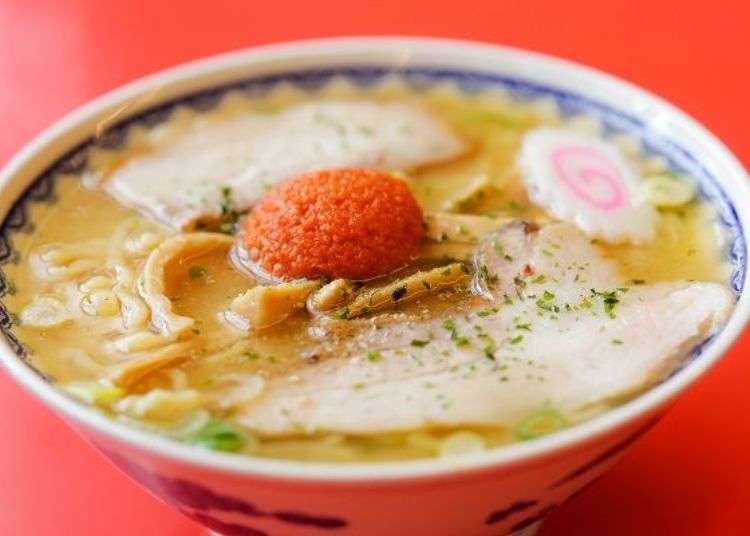
Described as "a treasure house of local ramen", each area of Yamagata Prefecture has its own unique style of ramen. Yamagata has led the nation for three consecutive years in their consumption of ramen while eating out, according to the 2017 Ministry of Internal Affairs and Family Survey.
Yamagata ramen is really something! In this "prefecture of ramen," the competition is especially fierce in Nanyo CIty. There is a wide variety of shops, beginning with "that" famous shop noted for its karamiso [spicy miso].
In this article, we will introduce three ramen shops in Nanyo City that are known for their Akayu Ramen which takes its name from the former name of the area.
Over 50 ramen shops battle one another inside a 5 km radius
Nanyo City is located in the southeastern part of Yamagata Prefecture. The area is also noted for the small hot spring town Akayu Onsen that has a rich history of more than 920 years and also Kumano Taisha [grand shrine] that is called "Ise" in the Tohoku region. The “soul food” of this town is ramen. This area has a long history of ramen deliveries made to homes, especially when they had visitors, as well as making deliveries to hot spring inns in the town, and this culture of hospitality has deep roots in Nanyo City.
![▲ The view overlooking Nanyo City's symbolic Lake Hakuryu [White Dragon Lake] and the urban area of Akayu](https://rimage.gnst.jp/livejapan.com/public/article/detail/a/30/00/a3000014/img/en/a3000014_parts_5d43a29f5c8f1.jpg?20210210161908&q=80)
According to the 2017 NTT Town Page Survey, the national average is 24.15 ramen shops for every 100,000 people. In Nanyo City, however, for every 100,000 people, there are about 180 ramen shops. With more than 50 ramen shops crowded into a 5 km radius, this area can indeed be called a ramen battleground.
When I asked Mr. Noboru Yamaguchi of the Yamagata Prefecture Noodle Restaurants Food Sanitation Association Akayu Branch Section Manager what sets the ramen of Nanyo City apart from others, he replied that the distinguishing feature of Nanyo ramen is the fact that the flavor is different for each shop. I was surprised to learn that there is no single defined flavor.
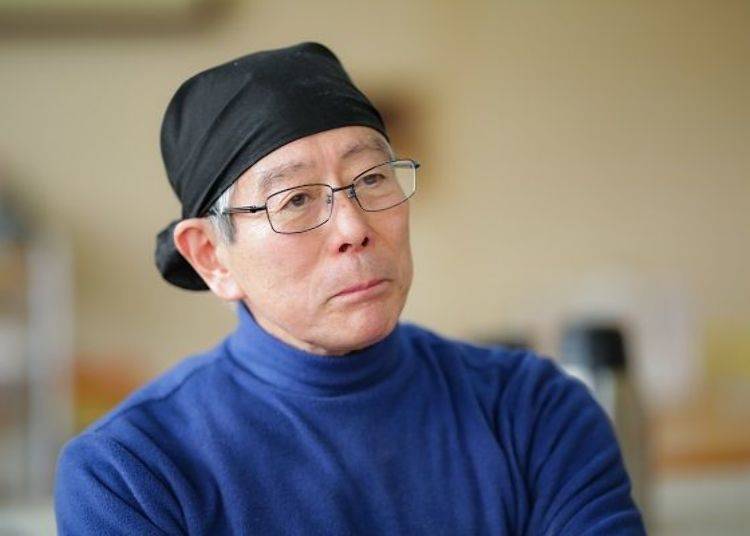
"There is a wide variety of soup types, types of noodles, and condiments used for the basic flavor (miso [bean paste], shoyu [soy sauce], shio [salt]), that are arranged to create various flavors ranging from the nostalgic. I guess another way of saying it is that what defines Nanyo City ramen is the pleasure found in discovering a flavor that you like," Mr. Yamaguchi said.
In this article, we will introduce three ramen shops. There are countless variations of the three signature ramen types of karamiso [spicy miso], chashu [slices of roasted pork], and shio [salt-flavored broth].
Each of the three shops we shall introduce is located close to the Akayu Onsen shopping area. Here you are certain to find exactly the type of ramen you are looking for.
1. Ryu Shanghai Akayu Ramen Shop: The originator of spicy karamiso ramen
The first thing that comes to mind when the ramen of Nanyo City is mentioned is karamiso and in particular that of Akayu Ramen Ryu Shanghai. There is also a branch in the Shin-Yokohama Ramen Museum (at the time of this writing in March 2019); it is a shop that has gained much media attention.
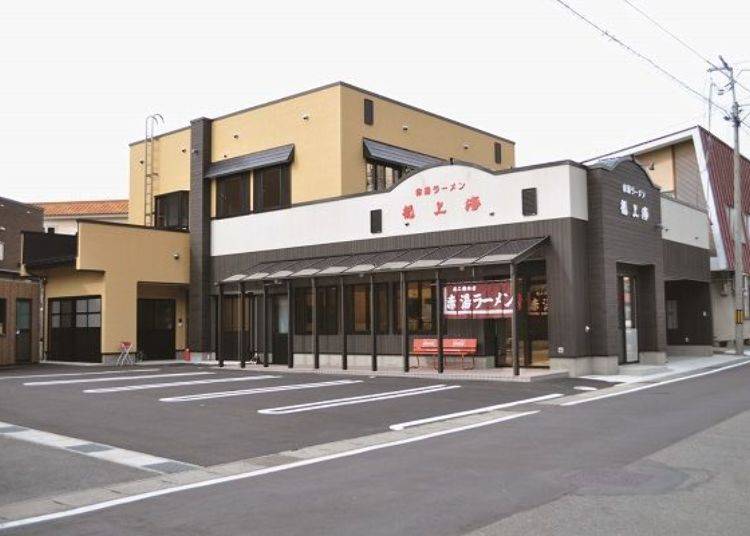
I visited on a weekday and the shop was already full at one o’clock with a line of people waiting for their turn to get in. While waiting for your turn to enter, shop staff will take your order. I noticed that many of the cars in the parking lot had out of prefecture license plates. It was obvious that these people were willing to wait in order to eat this delicious ramen.
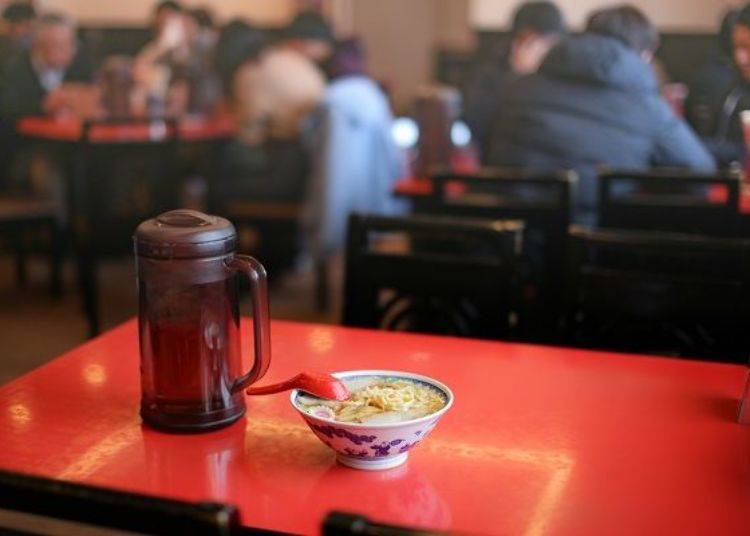
When it was my turn I ordered the famous Ganso Karamiso Ramen! It comes topped with a round dollop of karamiso.
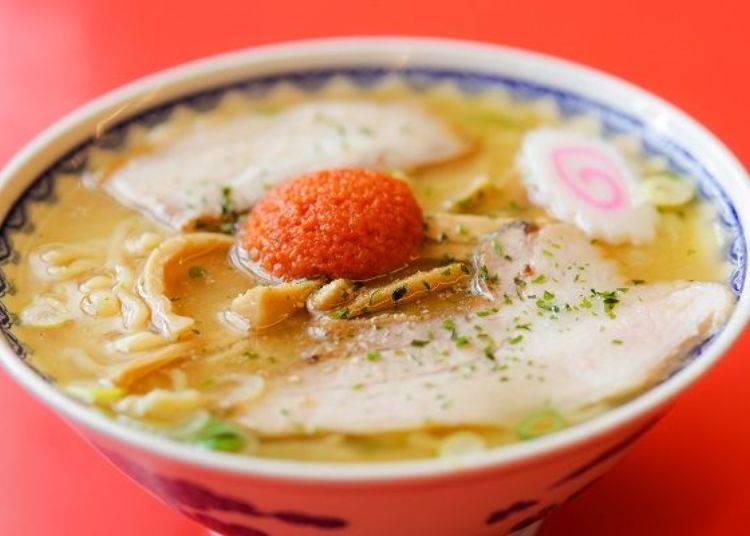
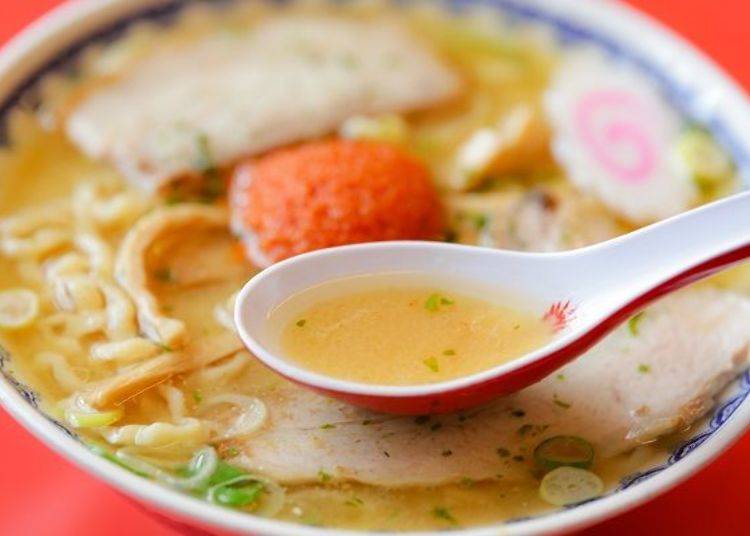
The broth, made with pork knuckles, chicken bones, vegetables, and small, dried sardines, is allowed to simmer for six hours after which the miso is added giving it a bold spicy flavor. The rich flavor of the broth spreads through your mouth with that first sip.
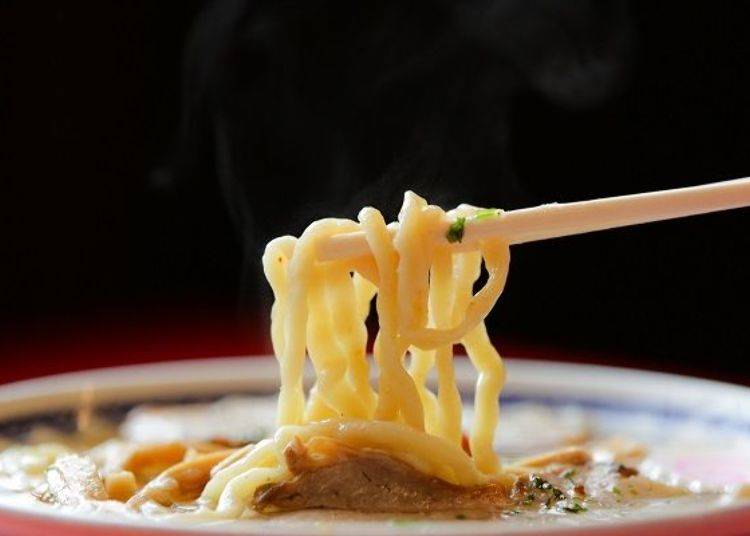
These curly noodles have a distinctive chewy texture. And they go especially well with the rich, miso soup. The soup has a firm, straightforward flavor such that I could eat it every day and not tire of it.
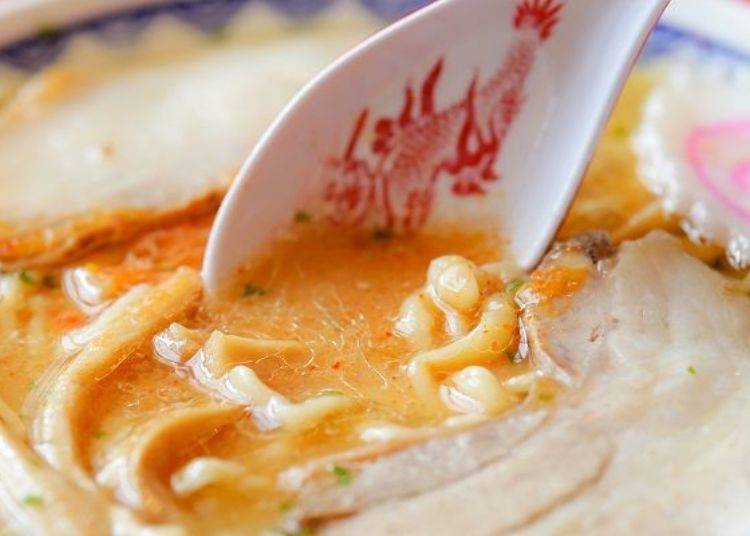
Once it has entirely dissolved and been mixed into the broth, it gives it a deep, rich and delicious flavor. The spiciness has a subtle taste of garlic.
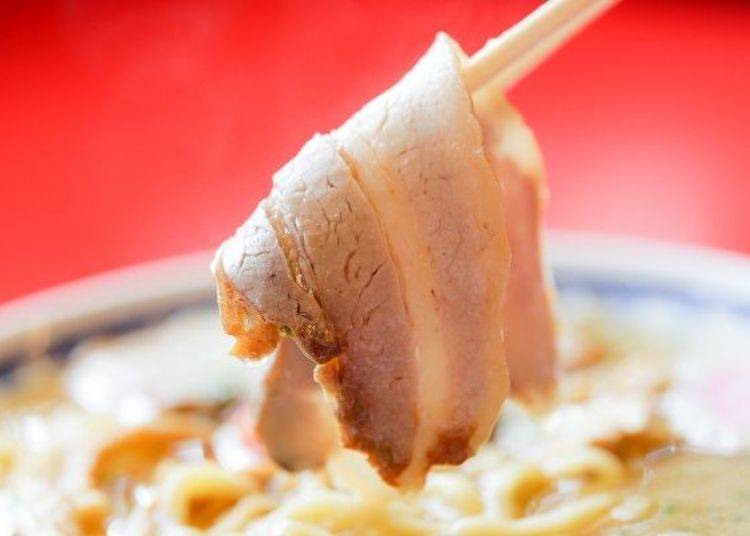
Pork belly that has been slowly simmered is used. Attention is given to using slices that have a perfect balance between lean and fat meat to give it its distinct flavor.
Whether it be due to the chewy noodles or rich soup, no matter how much I ate, there still seemed to be a lot remaining, thus giving this bowl of ramen high marks for hearty portions. Once the spicy miso has dissolved and mixed with the soup, it seemed to gain in flavor with each bite. I was left with a great sense of satisfaction after I finished off the bowl!
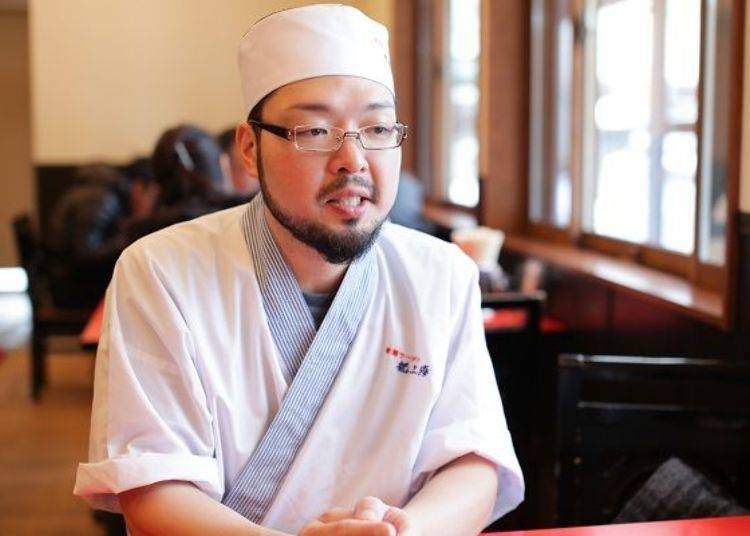
“Our shop, though it is primarily noted for its spicy miso, has paid great attention to the making of the noodles since its founding in 1958. At the time the shop opened proclaiming to be a “shop serving original ramen” we offered standard soy sauce-flavored ramen. But, despite the efforts put into making the soup, after customers had finished eating, in most cases the soup was left over, so each day we began adding miso to the broth to make it more like miso soup. At the time my grandfather (the founder), had the idea of giving the broth a miso soup flavor at the back of his mind,” Mr. Sato explained.
After much trial and error, he eventually developed the karamiso ramen which was billed as “spicy miso Chinese noodles” in 1960. Today people come from every part of the country to eat karamiso ramen. On an average day about 300 bowls are served and on Sundays between 400 and 450 bowls are served. During holidays, such as Golden Week, anywhere from 500 to 600 bowls are served in a day.
I was given a special glimpse of the kitchen to see how karamiso ramen is prepared.
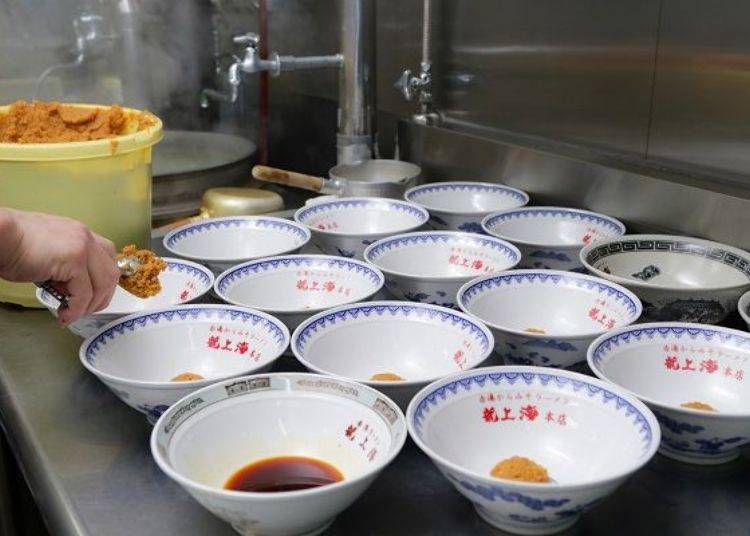
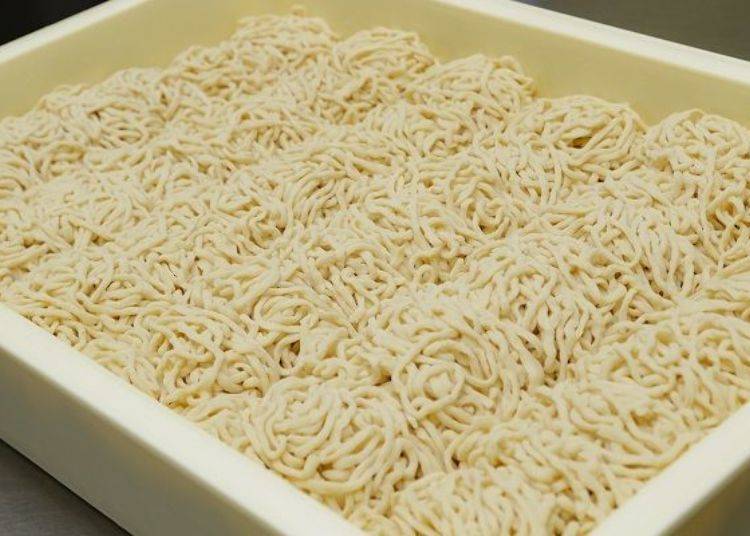
Much attention is paid to the amount of water and time spent kneading the dough to make the high-hydration noodles. If the noodles are allowed to sit too long the flavor changes so these are made every morning at 4:00 a.m. Attention is also closely paid to how long the broth is simmered to ensure that it has maximum flavor when served.
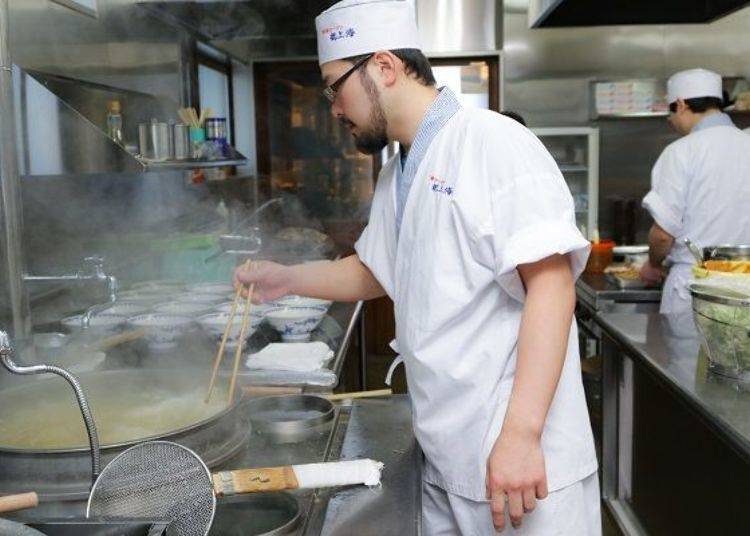

Karamiso has a miso base in which garlic, nanban (chili pepper), oil for mellowness, and ten other types of ingredients are all carefully measured and added. After being carefully blended together it is allowed to sit for one day in order for the flavor to fully develop.
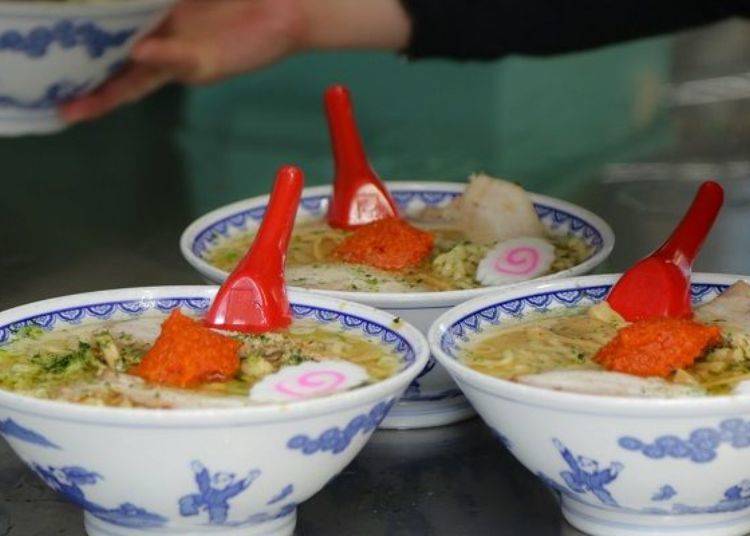
"I want to carefully protect and preserve the taste of Ryu Shanghai handed down by my grandfather and father," Mr. Sato said.
Ganso Karamiso Ramen is most certainly a masterpiece of Ryu Shanghai! Karamiso ramen was single-mindedly created by the founder and the second-generation proprietor perfected the noodles, and now the third generation is perpetuating the traditions they established. Ryu Shanghai is a ramen shop with a strong tradition.
-
Akayu Ramen Ryu Shanghai Shop赤湯ラーメン 龍上海本店
- Address 6-18 Niirone, Nanyo City, Yamagata Prefecture
- Phone Number 0238-43-2952
Open: 11:30 a.m. ~ 7:00 p.m. (Or when the soup runs out)
Closed: Wednesdays (open on national holidays; closed the following day)
2. Imose Shokudo: The chashu pork belly is most impressive!
The ramen of Imose Shokudo, our next shop, has remained unchanged since its beginning. Rumors abound about its chashu. Our curiosity picked, we decided to see it for ourselves.
![▲ The shop is located close to the Akayu Junior High School. Look for its yellow noren [shop curtain]](https://rimage.gnst.jp/livejapan.com/public/article/detail/a/30/00/a3000014/img/en/a3000014_parts_5d43a4e511902.jpg?20210210161908&q=80)
Sliding open the door and stepping inside a waiter ushered us to a seat and took our order. There are tables, a counter, and a raised area for sitting on the floor in the rear, all of which can accommodate 38 people. The lunch time had ended, but the shop was still lively with customers.
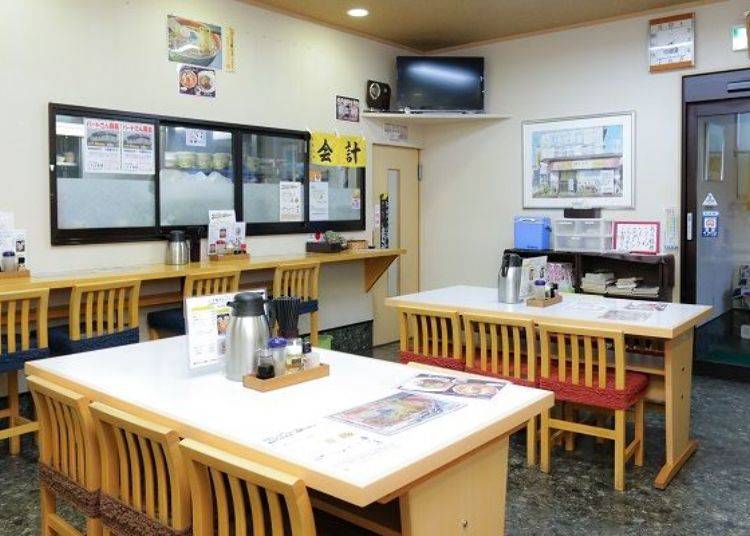
Founded in 1962, this ramen shop, managed by Mr. and Mrs. Noboru Yamaguchi who was mentioned earlier, is well-loved by the local residents. As soon as we sat down we ordered the widely popular Chashumen [noodles with roasted pork fillet].
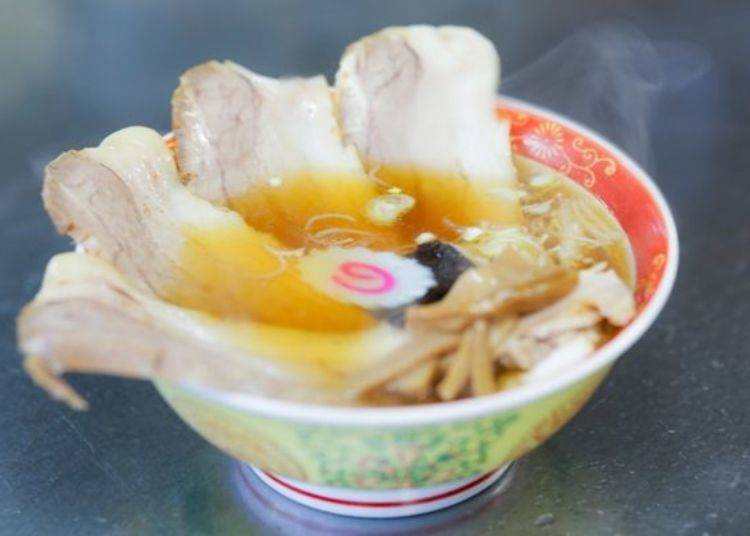
“Here you are!”
The bowl overflowing with chashu made quite an impact the moment it was served! 4 large strips of roasted pork fillet adorned the bowl.
“I like seeing the look of surprise on customers’ faces,” Mr. Yamaguchi said.
I wasn’t sure where to dig in with my chopsticks, so started with a strip of chashu.
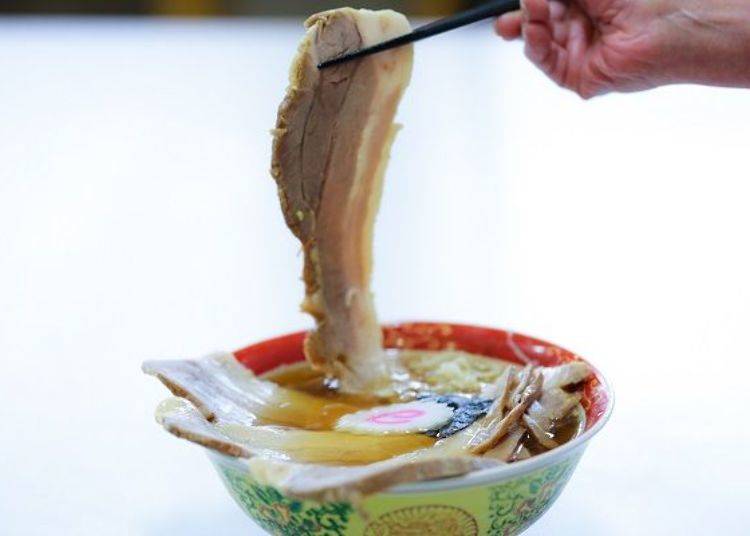
Though thick, the chashu was tender and had a slight aroma of ginger. Great attention is made in the preparation of the meat, such as by carefully washing it in water, so that it does not have an overwhelming fatty taste. This is definitely a dish brimming with volume and flavor that chashu lovers would relish.
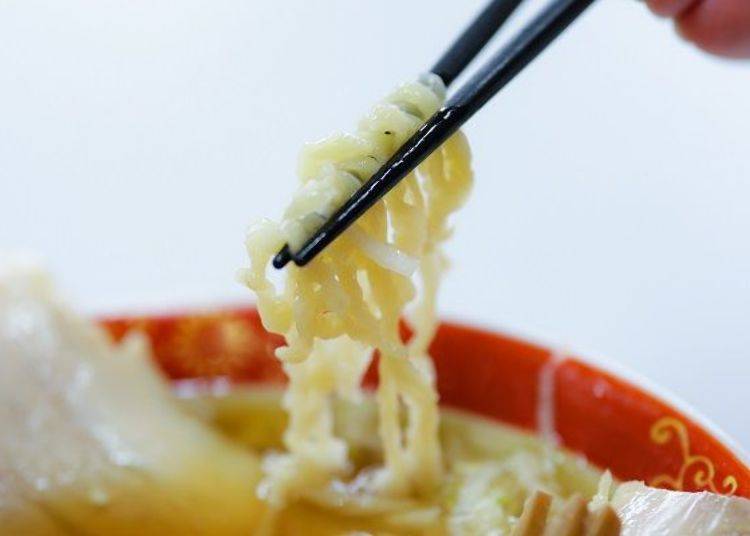
When I finally got down to the noodles, I saw that they were medium-thick in size and of the handmade highly hydrated type. The dough is kneaded to just the right amount so that when mixed with the soup they do not become chewy.
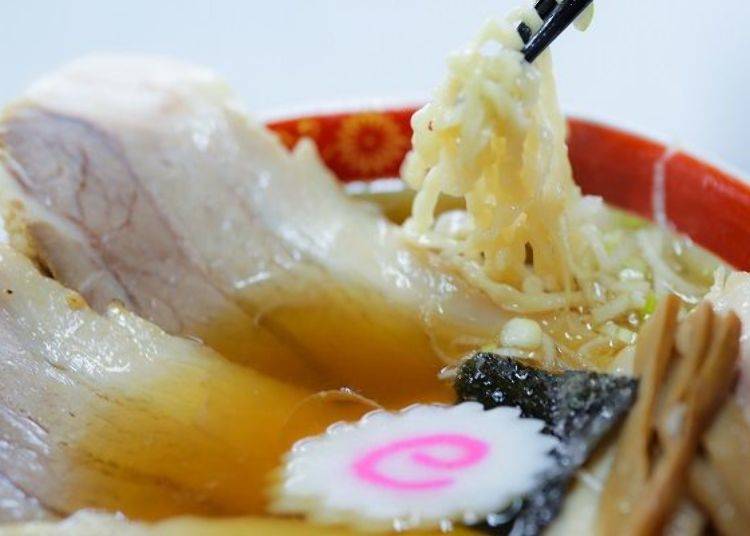
The soup, made with chicken bones, has a clean, mellow yet rich taste that is fine to the very last drop. This soup had a nostalgic flavor reminiscent of soups of old. The noodles had a firm texture which did not distract from the flavor of the soup. This is a delicious ramen in which all of the ingredients are perfectly matched.
After finishing the bowl, I was shown how the ramen is made.
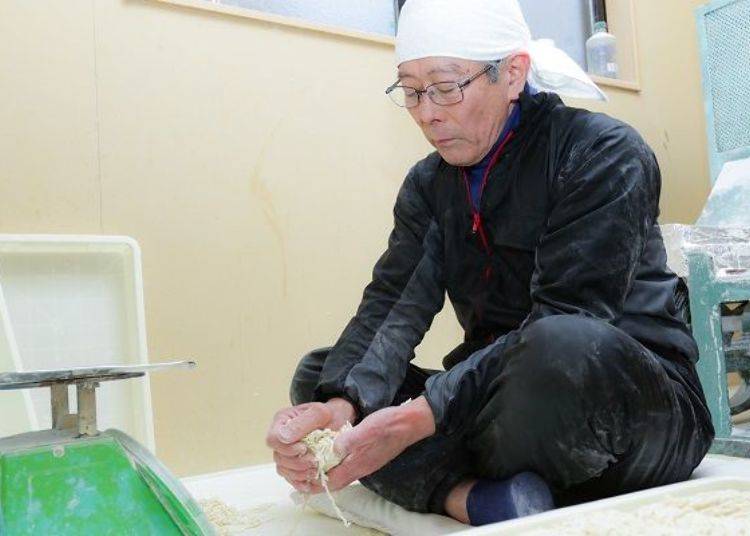
The noodles used in this shop evolved after long years of research and are something the shop takes most pride in. They are made by blending two or more kinds of selected high-quality strong flour.
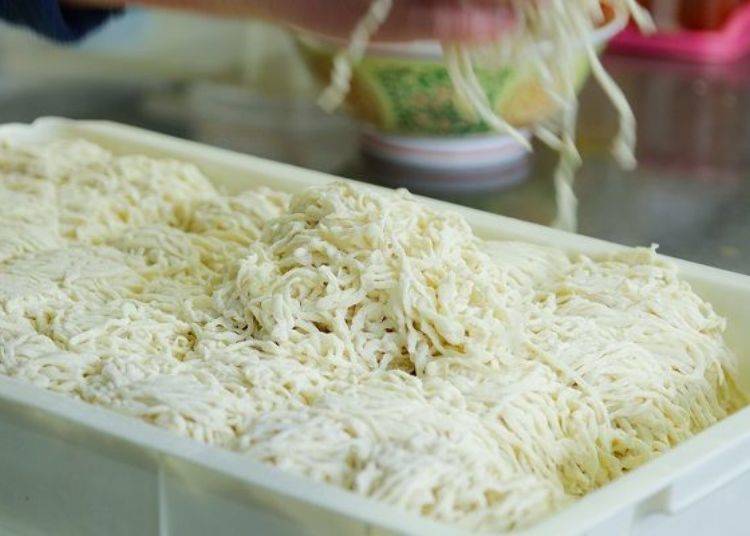
Two types of chicken bones, those of older and younger chickens, are used to make the broth base to which is added kelp, shiitake mushrooms, small, dried sardines, and vegetables, then everything is simmered until the extract is produced. The kelp used is that harvested from the kelp fields off the coast a Kushiro City in Hokkaido. No shortcuts are taken in selecting the ingredients used.
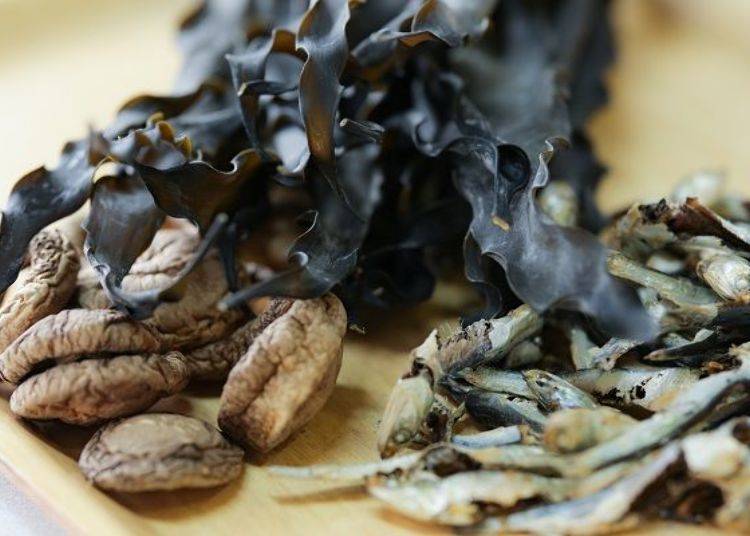
For the kaeshi [soup stock], light soy sauce made in a neighboring town is used. A long-standing relationship of trust with the manufacturer has resulted a delicious soup.
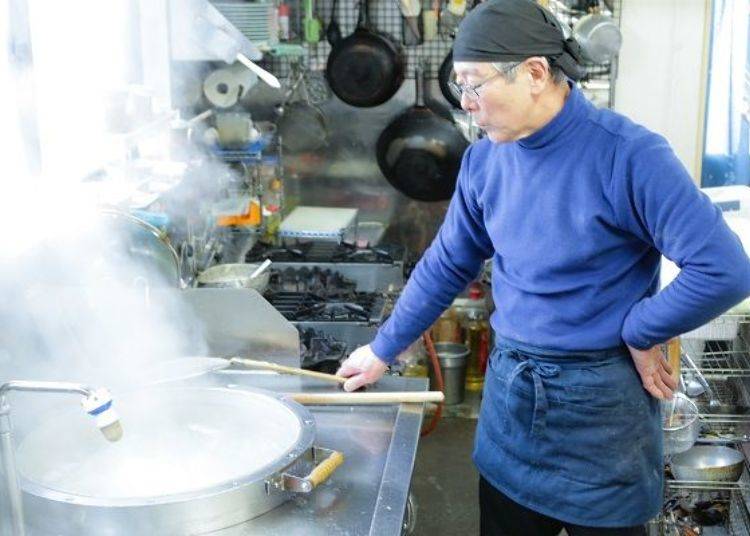
The chashu plays a leading role in this production. Ginger is first added to slices of pork belly which are then slowly simmered for three and a half hours. And this chashu is big! Each slice is 5 mm thick and 20 cm long.
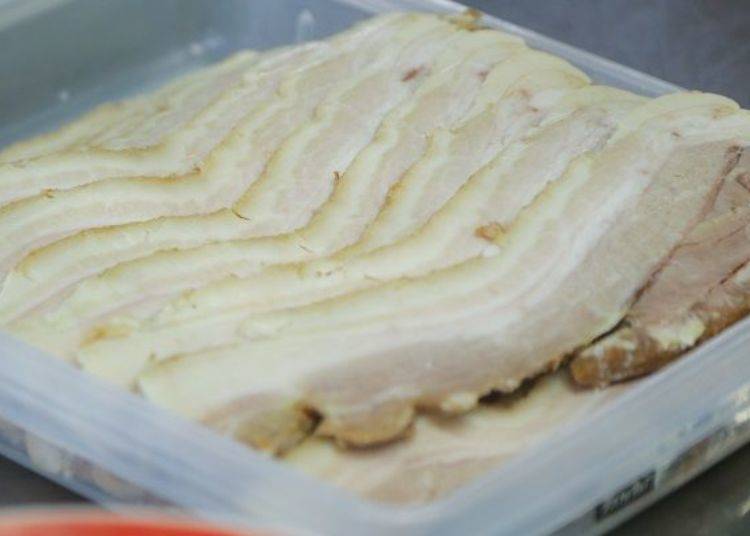
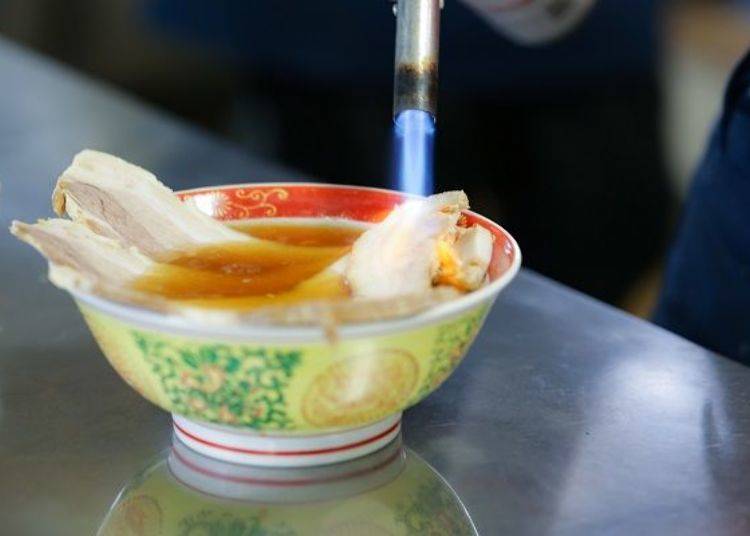
The menma [Chinese-style pickled bamboo shoots] are also handmade here in this shop. Dried menma is soaked in water, boiled, and then soaked again in water; this process is then repeated three of four times after which it is seasoned.
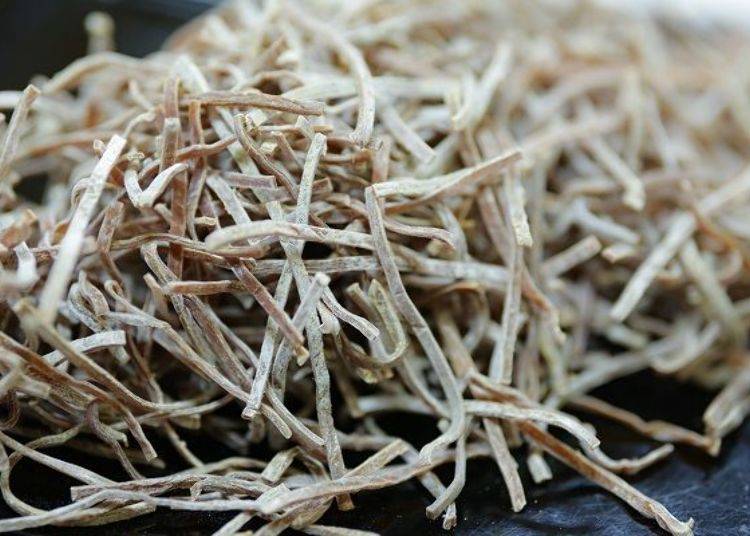
When I asked Mr. Yamaguchi why he went to such great lengths in the selection and preparation of his ingredients, he replied, “I just want to please my customers. For that reason, I do all that I can to achieve that.” Imose Shokudo is a long-established ramen shop that leaves a lasting impression and a desire to visit again.
-
Eatery Imose Shokudo食処 いもせ食堂
- Address 1880-2 Kunugizuka, Nanyo City, Yamagata Prefecture
- Phone Number 0238-43-2357
Open: 11:00 a.m. ~ 2:45 p.m. {L.O.), 5:30 p.m. ~ 7:30 p.m. (L.O.)
Closed: Thursdays (open on national holidays; closed the following day)
3. Menya Kenzo: Ramen with a slightly Italian taste!
In this fierce ramen war zone, Menya Kenzo offers a uniquely new menu to gain its share of the bounty.
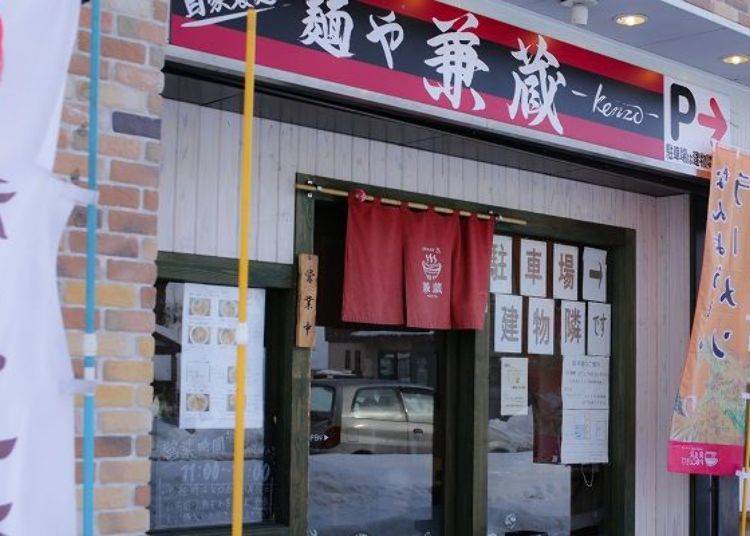
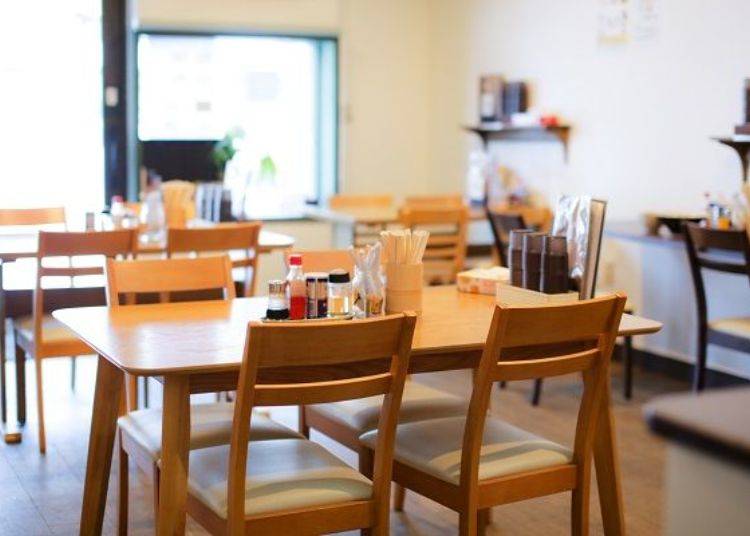
Mr. Kensuke Takahashi is the proprietor and has honed his culinary skills primarily in the world of Western cuisine, especially Italian. “The Italian restaurant Osteria EST ! next door is operated by my parents and me, but because of my love of ramen, I opened this shop in 2016,” he explained. This ramen shop is only open in the afternoon. From evening he works in the Italian restaurant next door.
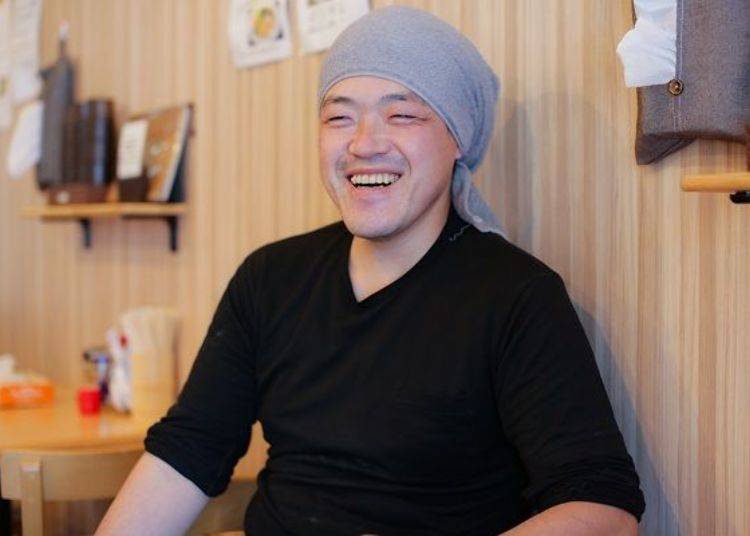
Among the many rich variations of ramen on his menu, the “Double Shellfish Broth Shio Ramen” is especially popular with women. The dish is delivered in about 5 minutes after it is ordered.
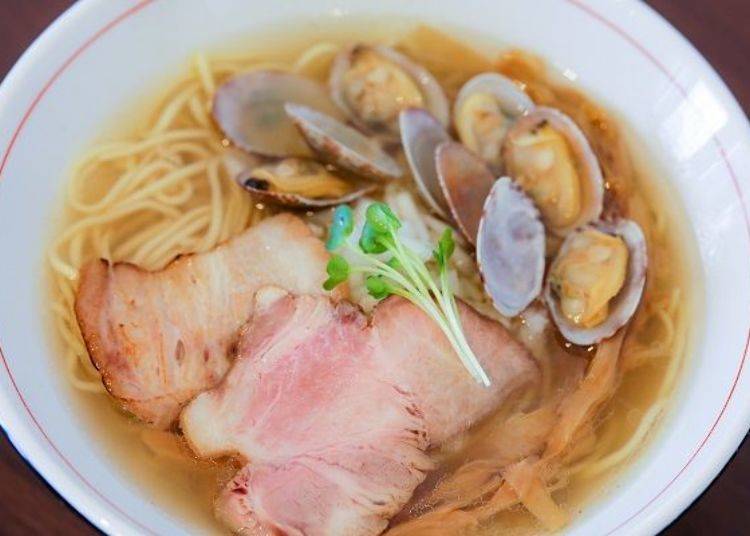
First, taste a spoonful of the soup. The clam extract gives the soup a delicious flavor that goes well with the thin noodles and is easy to eat because while bold in flavor it is not obtrusive. Neither the soup nor the noodles detract from the other instead they blend in perfect harmony.
![▲ Straight, thin noodles are used in this shio [salt-based] ramen](https://rimage.gnst.jp/livejapan.com/public/article/detail/a/30/00/a3000014/img/en/a3000014_parts_5d43a71b0a5cf.jpg?20210210161908&q=80)
The flavor is greatly affected by whether thick curly or thin straight noodles are used. The choice of which type of noodle to use depends on the soup. In both types Durum flour, the same used in Italian pasta, is used giving the noodles a chewy texture. It’s no surprise that Mr. Takahashi came up with this idea after his many years of making pasta.
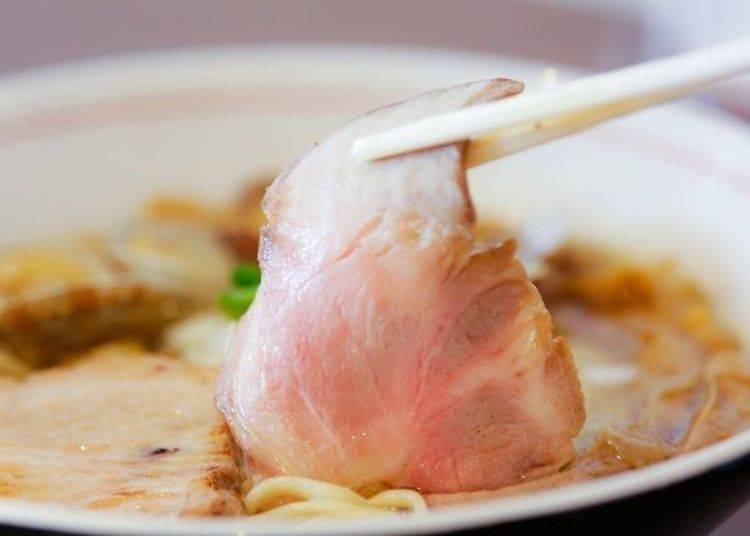
Both pork belly and pork shoulder loin are used for the chashu. Both are cooked with exquisite care making them so tender and delicious they melt in your mouth. Each has its own unique flavor.
The center of the bowl is garnished with chopped onion. In the end he decided to use chopped onions rather than the traditional thinly sliced scallion. The sweetness and flavor of the onion blend in with the soup, giving it a flavor that is neither Japanese nor Western, but something uniquely different.
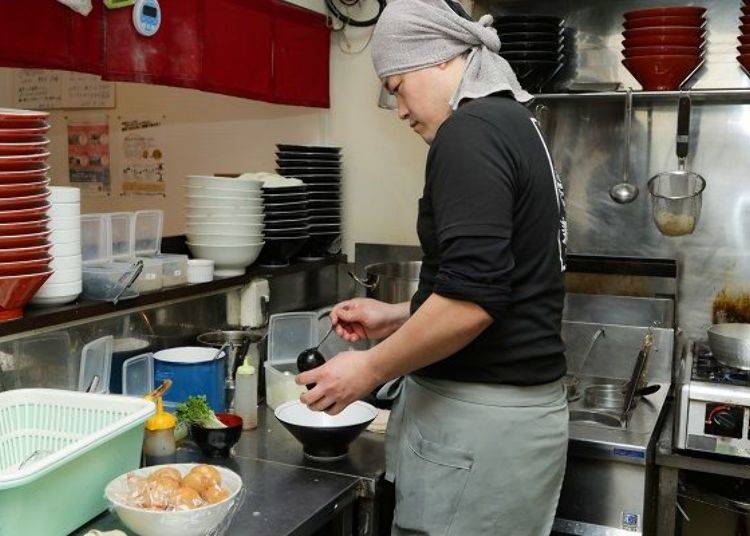
The base for the broth is made from a combination of pork spine and flying fish. “I don’t think many shops use pork spine. I ended up deciding to use it after experimenting with many other kinds of bones,” explained Mr. Takahashi. The pork spine gives the broth a deeper flavor while the flying fish proved to be a perfect match resulting in a mellow flavor that becomes almost addictive.
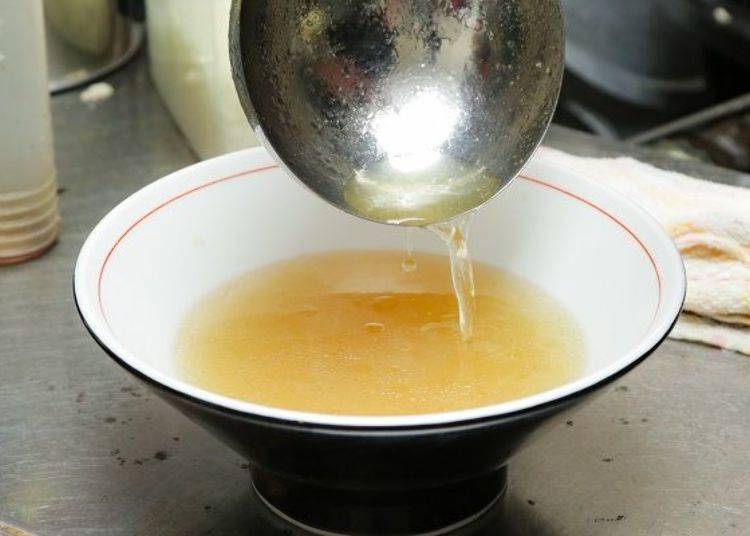
This is Double Shellfish Broth Shio Ramen at its best. To the broth made with littleneck clams and hard clams, which are similar in taste to large clams, a specially made salt sauce using Sicilian salt is added and mixed with the soup base and then the noodles are added. The dish is topped off with lots of littleneck clams and chopped onions.
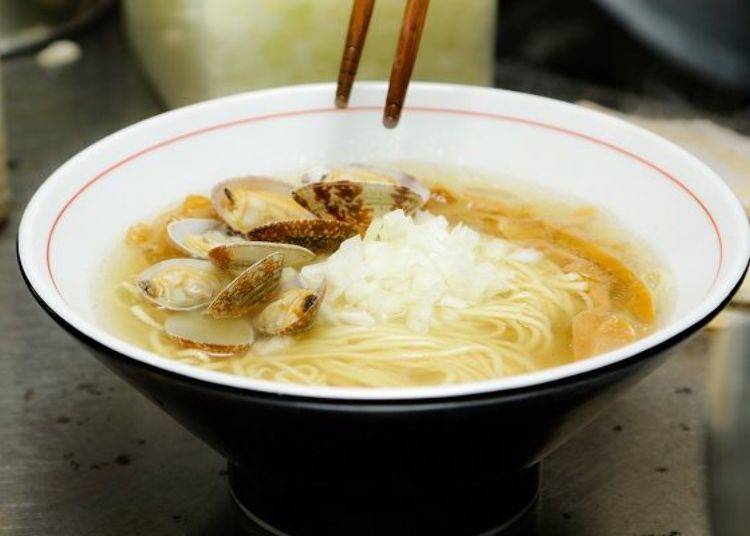
This shop also makes its own chashu. Locally produced pork belly is used and after an order is received, slices are grilled before being served. The pork shoulder loin on the other hand is cooked at a low heat in the pizza oven in the Italian restaurant next door.
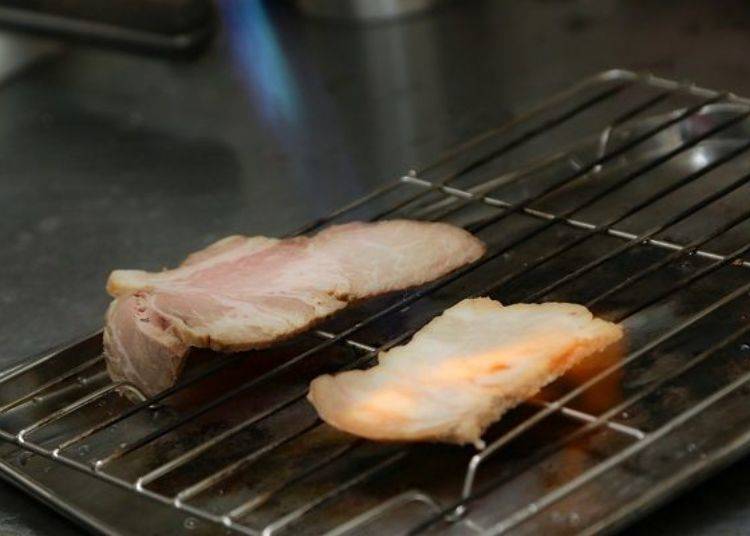
Other popular menu items only available here include the Tobio Nibo Tsukemen [Flying Fish Niveau Dipping Noodles] (830 yen including tax) and the Tokusei Tonkotsu Ramen [Special Pork Bone Ramen] (1,100 yen including tax).
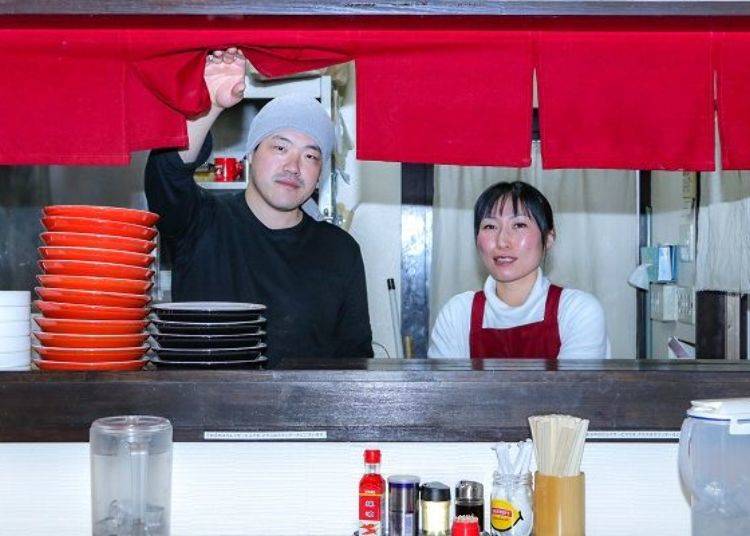
This ramen shop offers a type of ramen never before seen in Nanyo, so when you visit, be sure to try it. The noodles are made with the flour used in pasta, the pork is roasted in a pizza oven, and the ramen is prepared using Italian methods in a very unique way especially developed by Mr. Takahashi. The delicious ramen is certain to be able to hold its own in the ramen wars!
-
Menya Kenzo麺や 兼蔵
- Address 823-4 Akayu, Nanyo City, Yamagata Prefecture
Open: 11:00 a.m. ~ 2:30 p.m.
Closed: Tuesdays
Tel: 090-2794-8306, 0238-43-6006 (Osteria EST!)
In Nanyo City, in response to a questionnaire given to junior and senior high school students in the city conducted for revitalizing the area, the Ramen Division R & R Project was launched in 2017. This is a project to promote ramen by the "Ramen Section Staff" comprised of citizens and young city hall staff being conducted throughout the entire area. If you love ramen, especially that which is uniquely different, then by all means come to this town inhabited by ramen lovers.
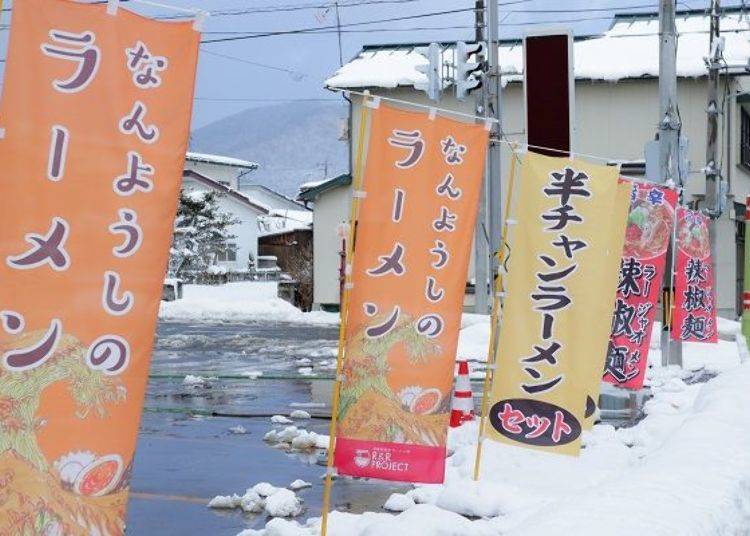
Photos by :Yumi Sato
- Area
- Category
*Prices and options mentioned are subject to change.
*Unless stated otherwise, all prices include tax.
Limited time offer: 10% discount coupons available now!
Recommended places for you
-

Nikka Whisky Sendai Distillery
Culture Experience
Sendai And Matsushima
-

Aquamarine Fukushima
Zoos, Aquariums & Botanical Gardens
Fukushima, Koriyama And Iwaki
-

Sado Gold Mine
Winter
Niigata And Sado
-

Aomori Museum of Art
Art Museums
Aomori, Hirosaki And Hachinohe
-
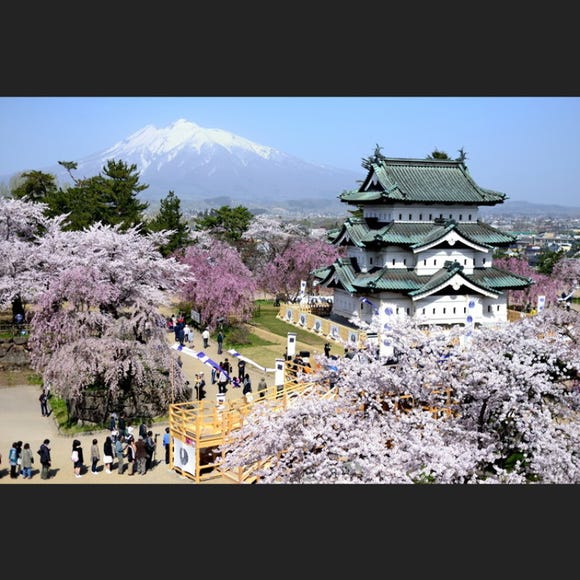
Hirosaki Park
Parks
Aomori, Hirosaki And Hachinohe
-
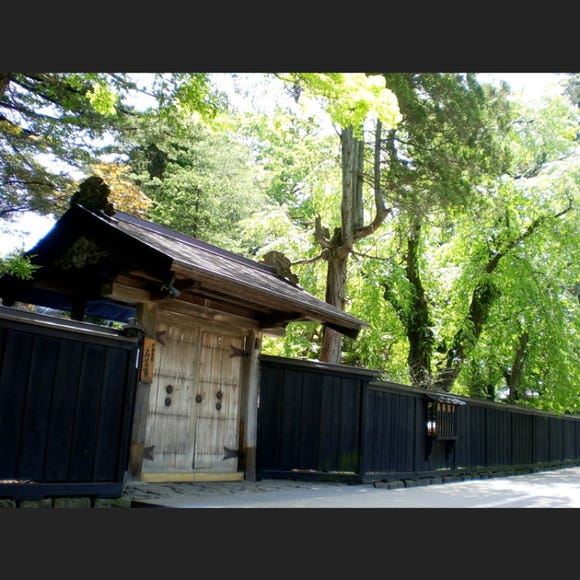
Ishiguro Samurai House
Historical Places
Surrounding Areas Of Akita
-
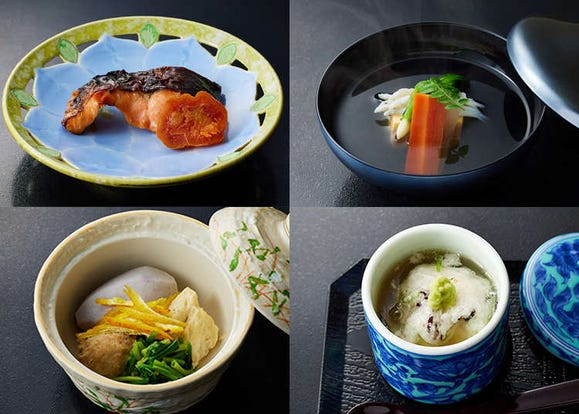
Japan’s Top Chefs Gather! New Cuisine Showcasing the Charms of Fukushima, a Treasure Trove of Produce
-

Explore Tohoku in Winter With 5 Budget-Friendly Travel Passes (Local Recommended!)
-

10 Dreamy Places in Fukushima to See the Cherry Blossoms
-
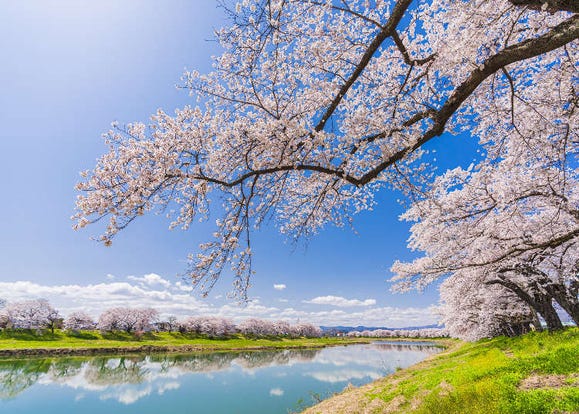
10 Beautiful Places in Miyagi to See the Cherry Blossoms
-
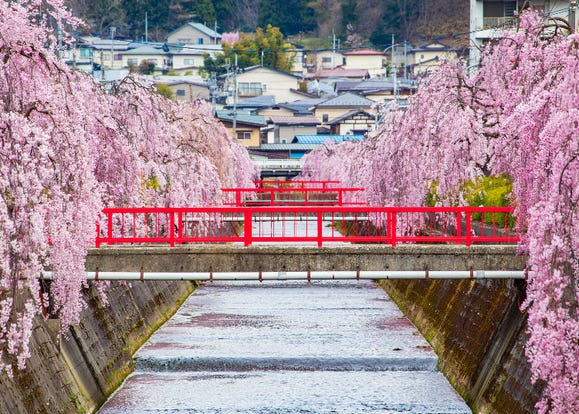
10 Breathtaking Places in Yamagata to See the Cherry Blossoms
-
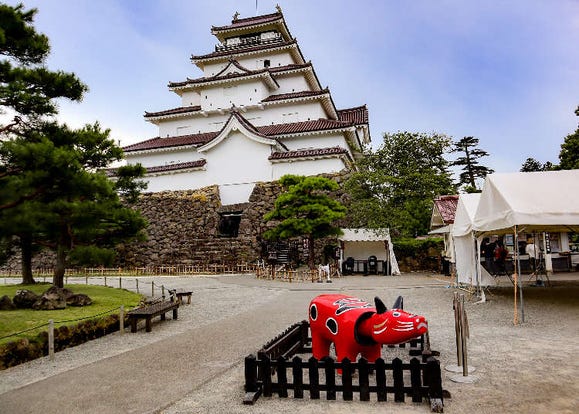
Aizu-Wakamatsu Guide (Fukushima): A Day in the City of Sake and Samurai
-

Ramen Locals Rave About! Top 3 Recommended Kitakata Ramen Spots in Fukushima
-
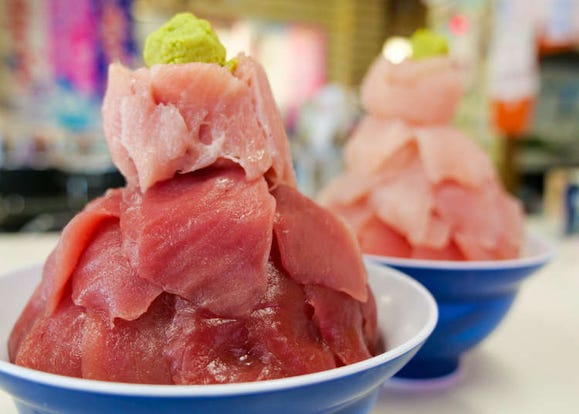
Tantalizing Foods From Japan’s Enchanting North!
-
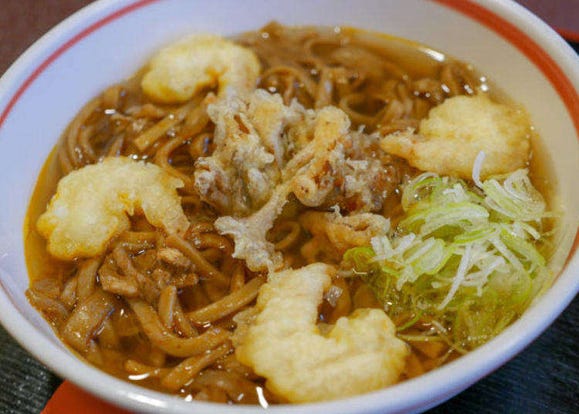
Kuroishi Tsuyu Yakisoba: Stir-Fried Noodles with Soup?! Trying Aomori’s Popular Local Cuisine!
-
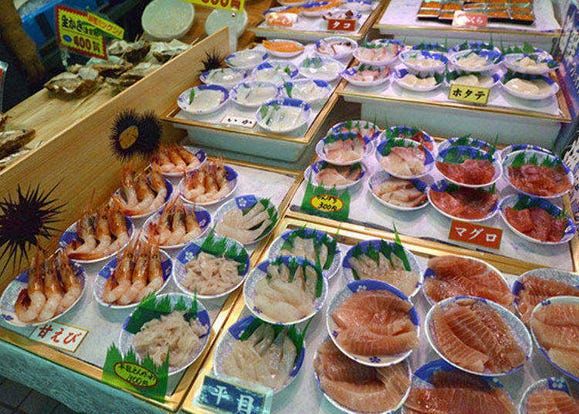
Scrumptious Aomori Seafood Bowls at Hasshoku Center - Japan’s 4,200 Square Meter Fish Market!
-

20 Best Things to Do in Fukushima Prefecture (Sightseeing Attractions, Local Foods & Activities)
-
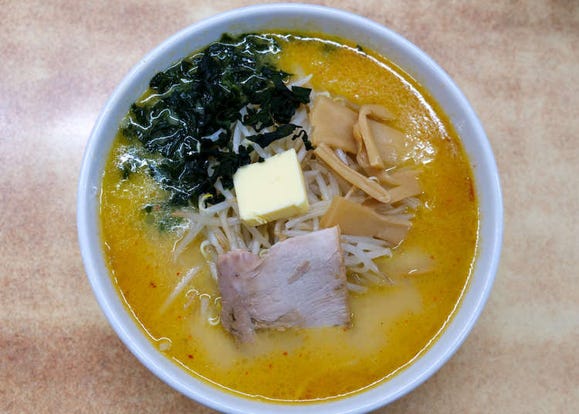
The 3 Best Aomori Ramen: Famous Shops in Hirosaki, Aomori, and Hachinohe!












